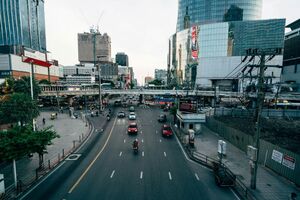Why DOOH Advertising Is Growing Fast in Canberra
Corps
Canberra, Australia’s capital city, may be smaller than Sydney or Melbourne, but its advertising landscape is evolving rapidly. With a highly educated population, a steady flow of government professionals, students, and tourists, businesses in Canberra are increasingly looking for smarter ways to connect with their audiences. That’s where Digital Out-of-Home (DOOH) advertising comes in.
In recent years, DOOH has experienced rapid growth in Canberra, transforming how brands reach people in high-traffic areas. But what’s driving this surge? Let’s explore the key reasons behind DOOH’s fast rise in the capital.
1. Prime Locations for High Visibility
Canberra’s compact size means fewer ad placements, but those placements pack a punch. Digital billboards and screens are strategically positioned in high-traffic zones such as:
-
Canberra Airport – targeting business travellers and tourists.
-
Northbourne Avenue & Parkes Way – major commuter routes.
-
Civic & Canberra Centre – the heart of retail and dining.
-
Event Venues like Manuka Oval and Exhibition Park – attracting large crowds during sporting and cultural events.
The ability to deliver dynamic ads in these concentrated hubs gives DOOH a powerful edge.
2. Smarter Targeting Through Data
Unlike traditional static billboards, DOOH leverages real-time data to target audiences more effectively. Canberra businesses can tailor campaigns based on:
-
Time of day (morning commuters vs. evening diners).
-
Day of week (weekday professionals vs. weekend shoppers).
-
Event-driven audiences (cricket fans at Manuka Oval, expo visitors at EPIC).
This precision ensures that advertising budgets are spent wisely, reaching the right people at the right moment.
3. Growing Demand for Dynamic, Engaging Ads
Canberra’s tech-savvy population is accustomed to digital experiences. Static billboards are easy to ignore, but DOOH ads stand out with motion graphics, animations, and interactive elements. Businesses can even run weather-based campaigns—promoting ice cream on hot days or warm drinks when the temperature drops.
This kind of dynamic content increases recall rates and boosts engagement.
4. Real-Time Flexibility for Businesses
Local businesses value the agility of DOOH. Unlike print or static OOH, digital billboards can be updated instantly. For example:
-
A café in Civic can advertise a breakfast deal in the morning and switch to happy hour specials in the evening.
-
A retail store can launch flash sales or end-of-season discounts within minutes.
-
Event promoters can update messaging based on ticket availability or weather conditions.
This adaptability makes especially digital signage Canberra fast-moving business and cultural scene.
5. Integration with Digital Marketing Strategies
Another reason for DOOH’s growth in Canberra is how seamlessly it complements online campaigns. Businesses can:
-
Use QR codes on screens to drive mobile engagement.
-
Sync social media hashtags with outdoor campaigns.
-
Retarget audiences online after they’ve seen a DOOH ad.
This offline-to-online connection enhances brand recognition and maximises campaign impact.
6. Rising Accessibility for Small and Medium Businesses
Previously, outdoor advertising was considered out of reach for smaller players. But with programmatic DOOH platforms, businesses in Canberra can now buy ad space with flexible budgets. Instead of committing to month-long static placements, they can purchase time slots, specific screens, or even short bursts during peak hours.
This has made DOOH more inclusive and attractive to local cafés, retail shops, real estate agencies, and service providers.
Final Thoughts
The rapid growth of DOOH advertising in Canberra is no coincidence—it’s the result of smarter targeting, engaging creative opportunities, and accessibility for businesses of all sizes. With its ability to reach the right people at the right time in high-traffic areas, DOOH is set to become the dominant form of outdoor advertising in the city.
For Canberra businesses looking to stand out in a competitive market, investing in DOOH is no longer just an option—it’s the future of outdoor marketing.








commentaires